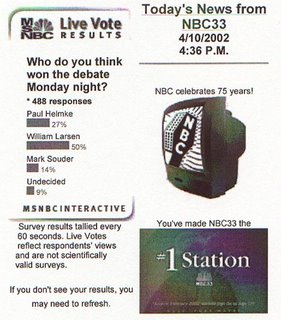Less payroll tax to be taken out of workers' check
Shortly there will be less payroll tax withheld from your paycheck. Is this a good idea? Will it increase deficits?
Myth 6
High deficits in the future make it difficult to pay social security benefits
Social Security by law cannot borrow money. It has statutory authority to spend only those funds received from the dedicated social security tax on wages, tax on benefits and funds in the trust fund. Federal Law prohibits transferring general revenues to any trust fund.[4]
By law the trust fund cannot be drawn down to zero. The trustees must submit a report promptly to congress detailing benefit cuts or tax increases when in any given year the trust fund is projected to fall below 20% of that given years expenses. Social Security's ability to pay future promised benefits is dependent solely on the ability to raise social security taxes.[5]
For over twenty years the Social Security Trustees have projected and reported the trust fund to be exhausted anywhere between 2019 and 2042 which is decades before its original projection of 2060. Where is their report detailing benefit cuts and/or tax increases to rectify the inadequacy?
[4] United States Code Title 42, Chapter7, Subchapter VII, Sec. 911 (a), http://www4.law.cornell.edu/uscode/42/911.html
[5] United States Code Title 42, Chapter7, Subchapter VII, Sec. 910 (a), http://www4.law.cornell.edu/uscode/42/910.html
For those who are under 40, this is a great thing. Their payroll taxes are not being set aside to pay their future benefits, but instead to pay beneficiaries who paid far too little in payroll tax.
Social Security Board Before the House Ways and Means Committee November 27, 1944
“Indeed, under certain assumptions the level annual cost has been estimated to be as much as 7 percent of payrolls. On the basis of a 4-percent-level annual cost it may be said that the reserve fund of this system already has a deficit of $6,600 million. On the basis of 7-percent-level annual cost it may be said that the reserve fund already has a deficit of about $16,500 million.”
“When Social Security began, benefits for those nearing retirement age were much higher than could have been paid for by the contributions of those workers and their employers. This was done so that the program could begin paying meaningful benefits even though workers nearing retirement would have only a short time to contribute.”
“Instead, the impression is left that the program was sound only when 16 paid in for every one taking out. Thus, of course, when the ratio changed to 3.3 to 1, the program became “unsustainable.”
“They ignore the fact that in 1950 only about 15 percent of the elderly were eligible for benefits and that it was expected by all who were acquainted with the program that the ratio would, of course, change dramatically as a greater proportion of the elderly became beneficiaries.”
“What in fact happened is that when just about all the elderly first became eligible for Social Security benefits, about 1975, the ratio was 3.3 contributors to each beneficiary and the ratio has stayed that way for the past 30 years. As the baby boom reaches retirement age, as the administration says, the ratio is expected to drop for the long run to 2.0 or 1.9 workers to each retiree. But that is the size of the problem - a drop from 3.3 to 2 workers per retiree.”



0 Comments:
Post a Comment
<< Home